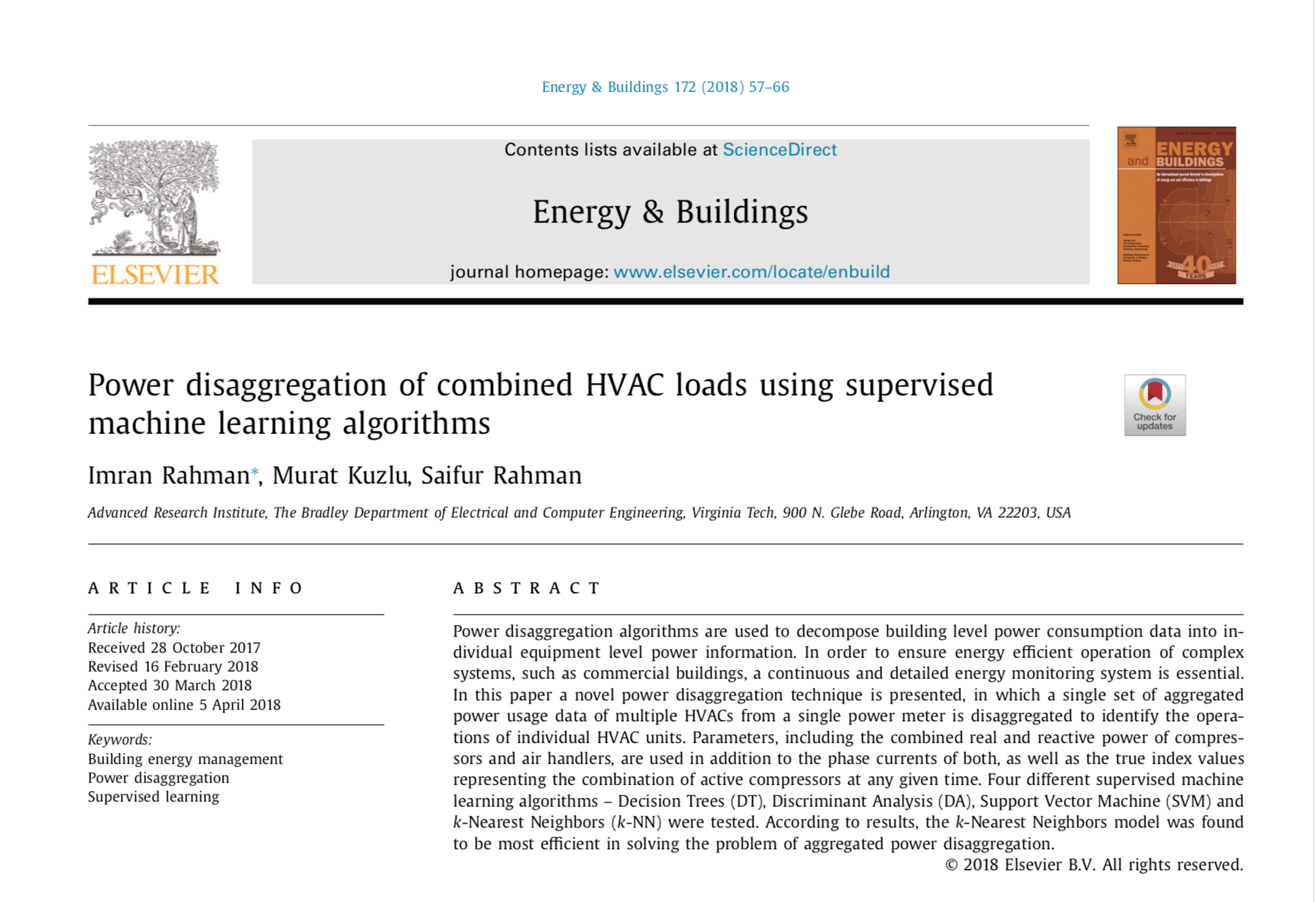
Authors: Imran Rahman, Murat Kuzlu, Saifur Rahman
Journal: Energy and Buildings Volume 172, 2018, Pages 57-66, ISSN 0378-7788
DOI: https://doi.org/10.1016/j.enbuild.2018.03.074
Abstract: Power disaggregation algorithms are used to decompose building level power consumption data into in- dividual equipment level power information. In order to ensure energy efficient operation of complex systems, such as commercial buildings, a continuous and detailed energy monitoring system is essential. In this paper a novel power disaggregation technique is presented, in which a single set of aggregated power usage data of multiple HVACs from a single power meter is disaggregated to identify the opera- tions of individual HVAC units. Parameters, including the combined real and reactive power of compres- sors and air handlers, are used in addition to the phase currents of both, as well as the true index values representing the combination of active compressors at any given time. Four different supervised machine learning algorithms – Decision Trees (DT), Discriminant Analysis (DA), Support Vector Machine (SVM) and k-Nearest Neighbors (k-NN) were tested. According to results, the k-Nearest Neighbors model was found to be most efficient in solving the problem of aggregated power disaggregation.

